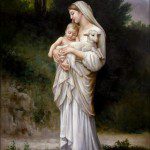
Some, I think, will find this article interesting:
“Why do Muslim women wear a hijab?”
***
I’m way behind, but I’m grateful to Matthew Wheeler for calling these items (as well as the photograph above) to my notice:
“Rancho Cucamonga Muslims deliver food to police, city staff on Christmas Eve”
“Muslim volunteers help feed Detroit’s homeless”
***
The only known existing autobiography of a slave written in Arabic in America is now freely available to the public online, thanks to the Library of Congress:
“Rare autobiography of Muslim slave goes online via Library of Congress”
***
Very sad:
“An American CEO who survived 9/11 died in the terror attack on a Kenya hotel”
***
Tomorrow (Tuesday) will be the last class day in my Middle East Studies (Arabic) 467R course, which is also listed as Philosophy 360R, that will be devoted to the twelfth-century fable that is the core of Lenn Evan Goodman, Ibn Tufayl’s Hayy ibn Yaqzan: A Philosophical Tale (Chicago and London: The University of Chicago Press, 2009).
I excerpt a couple of passages here from it that caught my interest.
In the first, the author, Ibn Tufayl, is describing or, rather, not describing, the experience of ecstasy or intimacy with the divine achieved by the eponymous hero of his tale.
Now do not set your heart on a description of what has never been represented in a human heart. For many things that are articulate in the heart cannot be described. . . . The ambition to put this into words is reaching for the impossible — like wanting to taste colors, expecting black as such to taste either sweet or sour. . . . [F]or there is no way of finding out what truly occurs at this plateau of experience besides reaching it. (149)
Compare that exalted description with the account of “a certain true religion” (left unidentified because, I suspect, to Ibn Tufayl its specific identity wasn’t especially important) on an adjacent but populated island:
Near the island where, according to one of the two conflicting accounts of his origin, Hayy was born, there was, so they say, a second island, in which had settled the followers of a certain true religion, based on the teachings of a certain ancient prophet — God’s blessing on all such prophets. Now the practice in this religion was to represent all reality in symbols, providing concrete images of things and impressing their outlines on the people’s souls, just as orators do when addressing a multitude. (156)
This suggests that Ibn Tufayl held a very curious view of “revealed religion” in general and of Islam in particular.












